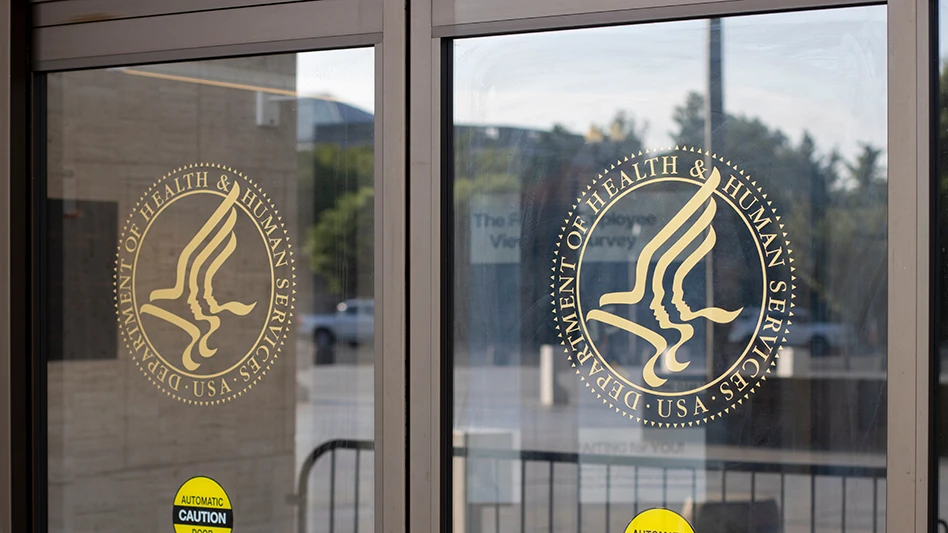Agricultural Research Service Honors Technology Transfer Award Winners
WASHINGTON — Food safety researchers top the list of teams who are receiving 2007 Technology Transfer Awards from the Agricultural Research Service (ARS), USDA’s research agency. These awards recognize ARS researchers who successfully develop and deliver new technology for public use.
For developing technology to reduce pathogen contamination of beef and poultry, ARS research teams at Clay Center, Neb., and Fayetteville, Ark., received 2007 Technology Transfer Awards for Outstanding Efforts.
“The research honored this year exemplifies our agency’s commitment to developing agricultural solutions and making them available to researchers, scientists and members of the general public,” said ARS Administrator Edward B. Knipling.
Scientists at the Roman L. Hruska U.S. Meat Animal Research Center (USMARC) in Clay Center were recognized for developing a chemical hide-washing system that removes E. coli O157:H7 and other dangerous microorganisms from cattle hides before processing.
The treatment is used on an estimated 40 percent of U.S. feedlot-raised beef cattle. Since the industry adopted the technology, the amount of ground beef in the United States testing positive for E. coli O157:H7 has dropped by about 43 percent. The research was led by USMARC Director Mohammad Koohmaraie.
Research conducted at the Poultry Production and Product Safety Research Unit in Fayetteville also helped reduce the risk of food-borne pathogen contamination. Research leader Ann M. Donoghue, with colleagues at the University of Arkansas, developed a new method for identifying beneficial probiotic bacteria. When consumed by poultry, such bacteria crowd out pathogenic bacteria such as Salmonella and Campylobacter inside the bird, improving bird health and food safety. Billions of chickens and turkeys throughout the world stand to benefit from the adoption of this research.
ARS also recognized John B. Luchansky at the Microbial Food Safety Research Unit’s Special Projects Team at the Eastern Regional Research Center (ERRC) in Wyndmoor, Pa., for superior efforts in technology transfer.
The team developed a process to enhance the safety of ready-to-eat meat and poultry products. The Sprayed Lethality in Container, or SLIC, intervention method reduces the prevalence of Listeria monocytogenes by 99.999 percent within 24 hours. Several food processors in the United States and England have adopted the SLIC technology.
CDC Report Points to Need for New Food-borne Illness Strategies
WASHINGTON — A 10-state report released by the Centers for Disease Control and Prevention (CDC) showed little change in the incidence of some food-borne infections after a period of decline.
The findings are from 2007 data reported to the CDC as part of the agency’s Food-borne Diseases Active Surveillance Network, FoodNet. FoodNet monitors food-borne disease and conducts related epidemiologic studies to help health officials better understand the epidemiology of food-borne diseases in the United States.
Campylobacter, Listeria, Salmonella, Shigella, E. coli O157, Vibrio and Yersinia did not decline significantly, and the estimated incidence of Cryptosporidium increased when compared with the previous three years (2004-2006). Although there have been significant declines in the incidence of some food-borne infections since surveillance began in 1996, these declines all occurred before 2004.
“The results show that prevention efforts have been partly successful, but there has been little further progress in the most recent years,” said Dr. Robert Tauxe, deputy director of CDC’s Division of Foodborne, Bacterial and Mycotic Diseases. “More needs to be done to make our food safer.”
The full report, “Preliminary FoodNet Data on the Incidence of Infection with Pathogens Transmitted Commonly Through Food — 10 States, United States, 2007” is available at www.cdc.gov/mmwr.
FSIS Updates Guideline for Controlling Salmonella and Campylobacter in Poultry
WASHINGTON — FSIS has released the second edition of the “Compliance Guideline for Controlling Salmonella and Campylobacter in Poultry.”
The updated guideline includes recommendations for controlling both Salmonella and Campylobacter.
The compliance guideline describes concerns and validated controls for each step in the broiler slaughter process. It targets small and very small poultry plants to help them better comply with regulatory requirements.
The compliance guide includes the following changes:
- Addition of guidance for the control of Campylobacter both at pre-harvest and during slaughter processing;
- Updated information regarding progress on implementation of the Salmonella verification program;
- Information for controlling Salmonella enteritidis at pre-harvest provided in Appendix A;
- Information on current research by FSIS and the Agricultural Research Service; and
- Examples of case studies as additional ways of validating a plant’s food system.
To view the complete document, go to www.fsis.usda.gov.
Silliker Announces Winners of 2007 GMP/Food Safety Audit Platinum Awards
HOMEWOOD, Ill. — Silliker has announced its 2007 Audit Platinum Award recipients. The award is presented annually to 10 food companies and 10 distribution centers receiving the highest scores in Silliker GMP food safety systems and distribution center audits.
Silliker conducted several thousand GMP/food safety and distribution center assessments across North America last year. Out of a possible 100 rating, this year’s recipients scored above 95 percent, the minimum criterion for award consideration.
“Our comprehensive audits are rigorous and touch every aspect of a facility. The commitment of these companies to the highest standards of food safety is reflected in this award,” said Rena Pierami, division vice president of auditing for Silliker.
Silliker audits combine a host of recognized industry practices and principles, as well as recommendations from the National Advisory Committee for Microbiological Criteria in Foods and FDA, into comprehensive evaluation forms used by Silliker auditors. These evaluations involve a systems review as well as a physical assessment of the facility in the implementation of food safety and quality systems procedures.
This year’s GMP awardees by location are:
- Blue Ribbon Meats — Hialeah, Fla.
- Bright Harvest Sweet Potato Company — Clarksville, Ark.
- Illes Seasoning and Flavors — Carrollton, Texas
- Real Foods Company — Seattle
- Sono Italiano Corporation — Arlington, Texas
- Stauffer Biscuit Company — Santa Ana, Calif.
- Surlean Foods — San Antonio
- Valley Fine Foods Company — Yuba City, Calif.
This year’s distribution center awardees are:
- Golden State Foods — Greensboro, N.C.
- Golden State Foods — Lexington, S.C.
- Golden State Foods — Suffolk, Va.
- Golden State Foods — Rochester, N.Y.
- Hub One Logistics — Chambersburg, Pa.
- M&M Restaurant Supply — Toledo, Ohio
- M&M Restaurant Supply — Aston, Pa.
- The Martin-Brower Company — Port Allen, La.
- Metroplex Distributors — Harriman, N.Y.
- Tropical Nut and Fruit Co., Inc. — Charlotte, N.C.
Insects Limited Receives Grant to Study Insect Biosensors
WESTFIELD, Ind. — Insects Limited, in partnership with Purdue University, recently received a Small Business Initiative Research grant from the state of Indiana and (USDA) for work in the area of insect biosensors.
The company’s $160,000 award is one of only four such grants awarded in Indiana this year. The company’s technical director, Alain Van Ryckeghem, leads the project.
“We are excited to work with Purdue on this new Insect BioSensor project. This new technology has the potential to change how our industry evaluates their treatment of traditional and organic food products throughout the world,” said Dave Mueller, president of Insects Limited. “It could reduce the total amount of pesticides used on our food products.”
A biosensor is a way to use live insect eggs to determine when the treatment is complete by measuring the oxygen produced. When the eggs stop using oxygen, the biosensor technology will determine that the treatment is complete. This method has the potential of reducing the amount of pesticides used in post harvest agriculture treatments, the company said.
FSIS and South Dakota Extension Develop Food Defense Guide
WASHINGTON — USDA-FSIS and the South Dakota State University Cooperative Extension Service have developed a guide to help operators of warehouse and distribution centers safeguard their operations from intentional harm.
The Guide to Developing a Food Defense Plan for Warehouse and Distribution Centers offers three steps to help owners and operators of warehouse and distribution centers take measures to safeguard their operations from intentional harm.
These steps are:
- Conduct a self-assessment
- Develop a food defense plan
- Implement your food defense plan
The guide includes a “Security in a Foodservice Operation” DVD that can be ordered at www.fsis.usda.gov.
QA Professionals on the Move
Mettler-Toledo Safeline has appointed Dick Wyman as X-ray regional sales manager and Cary Chapman as field service manager.
Shi-Wei Zhang has been named chief chemist at Food Quality Sensor International (FQSI) of Lexington, Mass. Zhang will focus on optimizing current chemical formulations as well as developing next generation products.
NSF International (NSF) has promoted David Kirkpatrick as its new director of corporate sales.
Julie Larson Bricher left publishing company Target Group, and launched Quiddity Communications, a communications and editorial consulting firm.
Purdue Researchers Present New Pathogen Detection Technology
WEST LAFAYETTE, Ind. — A method that improves detection of food-borne pathogens, such as Salmonella and E. coli, was presented by Purdue University researchers at a recent symposium.
The new technology was presented at the invitation-only 2008 University Research and Entrepreneurship Symposium in Boston. The event featured presentations of universities’ research technologies currently in development that have the potential to transfer into a viable startup company or be licensed to an existing company.
The detection technology is under development at Purdue’s Office of Technology Commercialization, said Joseph B. Hornett, senior vice president, treasurer and COO of the Purdue Research Foundation, which manages the Office of Technology Commercialization.
The “Identi-Screen: Advanced Pathogen Identification Technology” was presented by Mark Krivchenia, senior technology manager for the Office of Technology Commercialization. The Purdue researchers are E. Daniel Hirleman, a professor of mechanical engineering; J. Paul Robinson, a professor of cytomics; and Arun K. Bhunia, a professor of food science.
“Identi-Screen is a high-tech method to detect food-borne pathogens, such as Salmonella and E. coli, that populate the nation’s and the world’s five major food groups — meat, dairy, fruits, vegetables, seafood,” Hirleman said. “The method we have developed is less labor intensive and less expensive than existing methods and could save the lives of people in both the developed and developing nations. It also could save hundreds of millions of dollars for devastating recalls of contaminated food discovered after processing and distribution.”
The Identi-Screen system works by passing a laser light through a sample colony grown on a Petri dish to produce a scattering pattern onto an image plane. The image is recorded and analyzed to identify the pathogens in the sample using proprietary software.
Vet Unit of USDA Proposes Poultry Sampling Rule Change
The Veterinary Services Unit of USDA APHIS in Conyers, Ga., wants to amend the National Poultry Improvement Plan and its auxiliary provisions by providing new or modified sampling and testing procedures for plan participants and participating flocks.
The proposed changes were voted on and approved by the voting delegates at the plan’s 2006 National Plan Conference. These changes would keep the provisions of the plan current with changes in the poultry industry and provide for the use of new sampling and testing procedures.
The National Poultry Improvement Plan (NPIP) is a cooperative federal-state-industry mechanism for controlling certain poultry diseases. The plan consists of a variety of programs intended to prevent and control poultry diseases. Participation in all plan programs is voluntary, but breeding flocks, hatcheries, and dealers must first qualify as “U.S. Pullorum-Typhoid Clean” as a condition for participating in the other plan programs.
Comments are due by July 28.

Explore the June 2008 Issue
Check out more from this issue and find your next story to read.
Latest from Quality Assurance & Food Safety
- Kim Heiman Elected to Second Term as President of Wisconsin Cheese Makers Association
- FAO Launches $150 Million Plan to Restore Ukrainian Agricultural Production
- Pet Food Company Implements Weavix Radio System for Manufacturing Communication
- Penn State Offers Short Course on Food Safety and Sanitation for Manufacturers
- USDA Announces New Presidential Appointments
- FDA to Phase Out Petroleum-Based Synthetic Dyes in Food
- IFT DC Section to Host Food Policy Event Featuring FDA, USDA Leaders
- CSQ Invites Public Comments on Improved Cannabis Safety, Quality Standards





